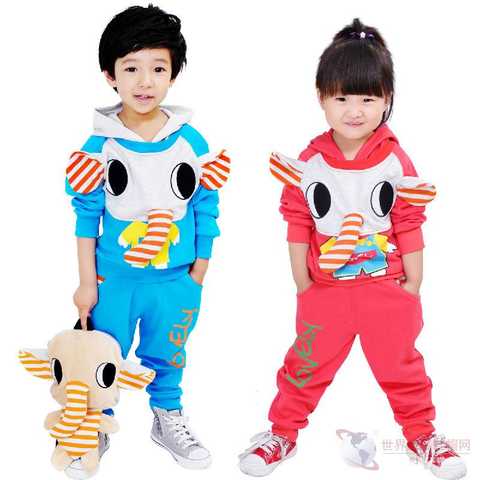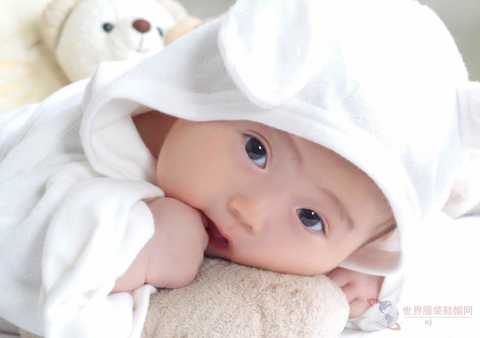Children's clothing safety is concerned about how to bypass these clothing "minefields"
It is reported that children's clothing has been widely concerned because of the recent recall of a children's pajamas in Japan, an internationally renowned brand of MUJI. In fact, in recent years, the news that children's clothing has been detected to exceed the standard of formaldehyde has been reported frequently, and well-known brands frequently shoot in the gun, not to mention the many low-priced, three-no-brand brands currently on the market. So, let me know how to get around these clothes "minefields"... Infants and children under 3 years old must be Class A The daughter of Ms. Chen’s daughter is 2 and a half years old. She has symptoms of redness, itching and other allergies from time to time. After going to the hospital for examination, the result was unexpected: the daughter's skin allergies were not caused by diet or the air environment. The real "culprit" was the clothes worn by the child. Children's clothing is "toxic"? This makes many parents feel that everything will not be good. Experts from the Shandong Provincial Fiber Inspection Bureau introduced that when manufacturing apparel fabrics, in order to prevent wrinkles, shrinkage, or to maintain the durability of printing and dyeing, manufacturers will add formaldehyde. If the residual formaldehyde in the fabric is not treated, it will be made into a garment, which will gradually be released during the wearing process, endangering human health, and children's wear is no exception. However, most parents often ignore the safety technology category when they purchase, and the children wear children's clothing with excessive chemical content. It is not known that the effects of toxic clothing with such a component exceeding the standard will not appear immediately, but it is far-reaching. "The physiology of infants and young children is not yet fully developed, and the brain will not selectively accept various super-standard chemicals in the blood. What is even more frightening is that infants under 8 months have higher absorption rates for chemicals that exceed the standard in these children's clothing. Among them, formaldehyde is the most harmful to infants and young children. Formaldehyde can enter the human body through diet, breathing or skin contact. Long-term low concentration of formaldehyde can cause loss of appetite, weight loss, weakness and insomnia. In asthma, bronchitis, chromosomal abnormalities, decreased resistance, especially when children are exposed to excessive formaldehyde in infants and young children, it can lead to developmental malformations and even cancer," experts said. On June 1 this year, China's first mandatory national standard for infants and children's textile products (children's wear), "Safety Technical Specifications for Infants and Children's Textile Products" (hereinafter referred to as "new national standard") was officially implemented. The "New National Standard" divides children's clothing into infant textile products for infants aged 36 months and younger, and children's textile products for children over 3 years old and 14 years old and below. According to different safety requirements, the standard of children's safety technology is divided into three categories: a, b and c. Infant textile products should meet the requirements of category a; children's textile products directly in contact with skin should meet at least class b requirements; non-direct contact with skin Children's textile products should meet at least category c requirements. Infants and children's textiles should be marked with the words "infant and child supplies" on the label. In terms of chemical safety requirements, the “new national standard†has increased the requirements for six plasticizers and two heavy metals such as lead and cadmium. In terms of mechanical safety, it is required that infants and children under the age of 7 do not have any ropes on the head and neck. For textile accessories, the attachment is required to have a certain tensile strength and there should be no sharp tips and edges. There are few parents who pay attention to safety technology when choosing children's wear The “new national standard†implementation period is two years, that is, the baby textiles produced before June 1, 2016 and meeting the relevant standards are allowed to continue to be sold in the market until May 31, 2018. What is the current situation of the baby textile market? The reporters found that during the transition period, the quality of children's wear in the market was uneven, and the situation of specialty stores was better than that of private shops and stalls. In a children's clothing store on the Seventh Road, the reporter saw that most of the children's summer clothing labels on the new shelves have been marked with “a classâ€. On the labels of infant clothes, some are marked with “a classâ€, “b class†and “babyâ€. "Children's products", some only write "first-class products" and "qualified products", the logo is more vague, and some even have no product description. In some large-scale commercial super-children's clothing area reporters, the baby clothing sold here is mostly a medium-to-high-end brand. On the sale of children's clothing labels, the fiber content of the clothing, the manufacturer and other information are indicated, and the category "a" is indicated. , baby products." Try to choose solid color light clothing How to avoid formaldehyde children's clothing when choosing clothes for children? To buy baby clothes, first check the logo on the clothing, carefully check the trademark on the product, the Chinese factory name, clothing number sign, ingredient mark, washing Marks such as instructions, certificates, implementation standard numbers, product quality levels, and safety categories. The qualified children's clothing that is generally manufactured by regular manufacturers shall be fully standardized. Formaldehyde is mainly from cheap dyes and auxiliaries, so don't buy clothes that have been treated with anti-wrinkle treatment. Try to choose children's clothing with less pattern, and the print on the pattern should not be very hard. Try not to buy bleached children's clothes. Also look at its chemical indicators, including pH, formaldehyde content, color fastness, and heavy metal content of metal fittings such as buttons (cannot use scrap copper as a button). These values ​​can be seen in the clothing inspection report, in line with national A-level standards. For this reason, children's wear in the solid, light or pink series is a priority. Look at the physical indicators of clothing. Mainly the material of the clothing, the baby clothing is best to use 100% cotton material, the good cotton cloth is combed cotton. If the surface of the clothes is pilling, it is not pure cotton. If there are many knuckles on the surface of the clothes, it is not combed cotton. In addition, special attention should be paid to the special odors emitted from some textile products, such as musty, gasoline and kerosene, fishy odor, etc. These odors often indicate excessive chemical residues on the textile. Children's clothing that has just been bought needs to be cleaned and aired before being worn by infants. The packaging of clothing can not be ignored. The formaldehyde of many clothes is infiltrated from unqualified bags, so the quality of the clothes bags is good. If it is mailed, use a sealed bag. Finally, infants and toddlers should use detergent liquid with caution, preferably with special infant detergent. This prevents chemical residues from irritating the baby's skin and reducing skin irritation. Foam Baby Pillow,Baby Head Pillow,Memory Foam Baby Pillow,Baby Head Shaping Pillow Nantong Wenbo Foam Art Co.,Ltd , https://www.ntwbmemoryfoam.com

